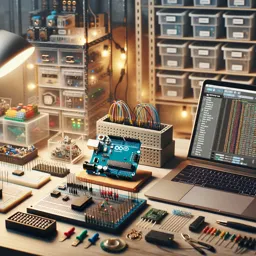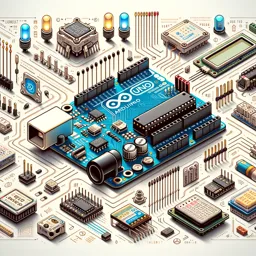Robotics has come a long way since its early conceptual stages. From ancient myths to modern-day marvels, the journey of robotics is a fascinating blend of imagination, innovation, and technological advancement. This article explores the history and evolution of robotics, highlighting key milestones and influential figures in the field.
Ancient Origins
- Mythological Beginnings:
- The concept of artificial beings dates back to ancient myths and legends. Greek mythology tells of Talos, a giant automaton made of bronze who protected Crete. Similarly, in Chinese folklore, there are tales of mechanical beings created by skilled artisans.
- Early Automata:
- The first known mechanical devices designed to mimic human or animal actions, known as automata, appeared in ancient civilizations. For instance, the Greek engineer Hero of Alexandria (10–70 AD) created simple machines powered by steam, water, and air pressure.
Medieval and Renaissance Innovations
- Medieval Mechanisms:
- During the Middle Ages, inventors in the Islamic world and Europe created more sophisticated automata. The Banu Musa brothers, 9th-century Persian inventors, wrote the “Book of Ingenious Devices,” describing numerous mechanical inventions.
- Renaissance Creativity:
- The Renaissance period saw a resurgence of interest in automata. Leonardo da Vinci designed intricate mechanical devices, including a humanoid robot capable of limited movement, known as Leonardo’s robot.
Industrial Revolution and Early 20th Century
- Rise of Industrial Automation:
- The Industrial Revolution in the 18th and 19th centuries brought significant advancements in machinery and automation. Factories employed mechanical devices to increase production efficiency.
- Early 20th Century Robots:
- The term “robot” was first used by Czech writer Karel Čapek in his 1920 play “R.U.R. (Rossum’s Universal Robots).” The play depicted artificial beings created to serve humans, ultimately leading to a rebellion.
Mid-20th Century Breakthroughs
- The Dawn of Modern Robotics:
- The 1950s and 1960s marked the birth of modern robotics. American inventor George Devol created the first programmable robot, the Unimate, in 1954. Unimate was used in General Motors’ assembly line, revolutionizing manufacturing processes.
- Advances in AI and Computer Science:
- The development of artificial intelligence (AI) and computer science played a crucial role in advancing robotics. Researchers like Alan Turing and John McCarthy laid the groundwork for intelligent machines.
Late 20th Century to Present
- Robotics in Industry and Beyond:
- The 1980s and 1990s saw robots becoming more prevalent in various industries, from automotive manufacturing to healthcare. Innovations in sensors, actuators, and computing power enabled robots to perform increasingly complex tasks.
- Humanoid and Service Robots:
- Humanoid robots, designed to resemble and interact with humans, became a major focus of research. Notable examples include Honda’s ASIMO and Boston Dynamics’ Atlas. Service robots, like robotic vacuum cleaners and personal assistants, entered households worldwide.
- Collaborative Robots (Cobots):
- Collaborative robots, or cobots, emerged as a significant trend in the 21st century. These robots work alongside humans, enhancing productivity and safety in workplaces.
The Future of Robotics
- AI Integration:
- The integration of AI and machine learning continues to enhance robotic capabilities. Robots are becoming more autonomous, adaptive, and capable of learning from their environments.
- Healthcare and Medical Robotics:
- Robotics is revolutionizing healthcare with surgical robots, rehabilitation devices, and robotic prosthetics. These innovations are improving patient outcomes and expanding the possibilities of medical treatment.
- Space Exploration:
- Robotics plays a crucial role in space exploration. Rovers like NASA’s Perseverance and robotic arms on the International Space Station (ISS) are essential for conducting scientific research and maintaining space infrastructure.
Conclusion
The history and evolution of robotics is a testament to human ingenuity and the relentless pursuit of innovation. From ancient myths to cutting-edge technology, robotics has transformed our world and continues to push the boundaries of what is possible. As we look to the future, the potential for robotics to improve our lives and solve complex challenges remains limitless.



















